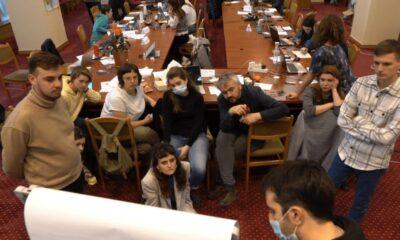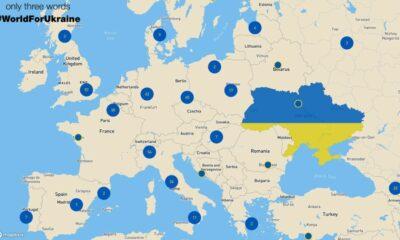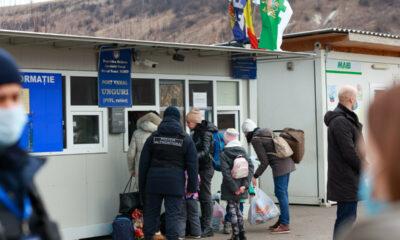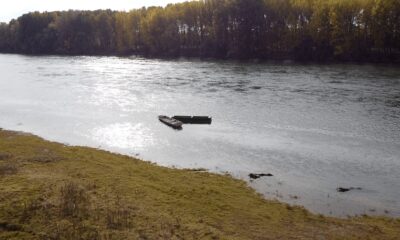Economy
Analysis: Discussions intensify with Kazakhstan on Trans-Caspian gas pipeline
Reading Time: 4 minutesDiscussions intensify with Kazakhstan on Trans-Caspian gas pipeline
Author: Vladimir Socor
On a visit to Astana on February 27-28, Azerbaijan’s Minister of Foreign Affairs Elmar Mammadyarov took the initiative to discuss possible exports of gas from Kazakhstan through the proposed gas pipeline on the Caspian seabed (Kazakhstan Today, Turan, February 28).
In his talks with Kazakh President Nursultan Nazarbayev and senior government officials, Mammadyarov broached the existing commercial, legal, and technical options for Kazakhstan’s gas to reach Europe through the proposed trans-Caspian pipeline and the existing Baku-Tbilisi-Erzurum (Turkey) line, which can be integrated in Turkey with the EU-backed Nabucco pipeline project for deliveries to Europe. The same corridor would also carry Turkmen gas. The United States supports all the phases of such a gas corridor. Azerbaijan’s top leadership is the most active regional promoter of this project.
Kazakhstan’s president and government display keen interest in the project, but also considerable uneasiness about Russia’s resistance to it. Speaking to the press during Mammadyarov’s visit, Kazakh Energy and Mineral Resources Minister Baktykoja Izmuhambetov noted that Astana has recently entered into discussions on the project with senior U.S. and EU officials, but it cannot ignore Russia’s opposition. Russia insists that such a project needs the consent of all five Caspian riparian countries, meaning a Russian and Iranian right of veto.
U.S.-Kazakh discussions in early February in Astana also evidenced Kazakhstan’s concern about Russia’s opposition to this project. Minister of Foreign Affairs Marat Tazhin deemed it necessary to declare publicly that Kazakhstan’s policies on oil and gas exports “are shaped through active consultations with Russia. Our strategic document on eternal friendship with Russia is not just lip service or a rhetorical balancing act. We are in fact conducting a very open and transparent dialogue with Russia” on energy transit (Interfax, February 5). In those talks, U.S. Assistant Secretary of State for Economic and Energy Affairs Daniel Sullivan and Deputy Assistant Secretary of State Matt Bryza underscored Kazakhstan’s own interest in opening export outlets for its oil and gas, so as to end Russia’s transit monopoly.
Kazakhstan’s interest in that regard fits in closely with Western companies’ need for non-Russian export outlets and Western countries’ imperative to avoid dependence on Russian transit of their energy supplies. At present, 100% of Kazakhstan’s gas exports and 90% of its oil exports are going to or via Russia (Kazakhstan Today, Interfax, February 5).
Some Kazakh officials, including Izmuhambetov, suggest connecting Russia to the trans-Caspian gas project as an incentive for Moscow to consent to it. Recently, Kazakhstan proposed that Russia be offered an outlet for associated gas from the northern Caspian oilfields Tsentralnoye and Khvalinskoye into the proposed trans-Caspian pipeline (Interfax, February 28). Those two offshore fields, legally adjudicated to Russia, actually straddle the Kazakhstan-Russia median line and are being developed by the two countries on a parity basis.
Kazakhstan is now drafting proposals to the European Commission on construction of a trans-Caspian gas pipeline and the funding of technical and economic feasibility studies. The pipeline as now proposed would originate at Kazakhstan’s giant Tengiz field onshore near the coast, connect with a line from Turkmenistan west of the port of Turkmenbashi, and continue on the seabed to Baku and overland to Tbilisi and Erzurum.
Tengiz, the giant oilfield under development principally by ChevronTexaco and ExxonMobil, is expected to yield large quantities of associated gas when production reaches the planned level of some 25 million tons of oil annually. However, Russia’s stranglehold on the Tengiz-Novorossiysk pipeline — the sole existing outlet from Tengiz — has held back the oil production at Tengiz to some 13 million tons annually for the last three years.
Further affecting commercial prospects for associated gas, Italy’s ENI-Agip company — the leader in the consortium to develop the supergiant Kashagan oilfield — has postponed the start of production there into the second half of 2010, instead of 2008 as had been planned (Interfax, February 26). In any case, the oil companies need time to develop and install the expensive technology for capturing the associated gas into a pipeline, instead of burning it in flares at the oil well.
Kazakhstan produced 27 billion cubic meters of gas in 2006, slightly up on 2005. Associated gas accounts for almost half of usable production (Interfax, January 18). The country expects to produce 29 billion cubic meters in 2007 and some 40 to 50 billion cubic meters per year during 2010-2015. Flaring of associated gas is expected to stop by 2011, at which time most of those volumes should also be marketable for export. However, Kazakhstan will undoubtedly require growing volumes of gas for internal consumption of its urbanizing society, as well as for Kazakhstan’s southern regions, which are traditionally supplied with gas from Uzbekistan.
Russian quasi-monopolization of exports is a persisting risk. Gazprom is currently proposing a long-term agreement on the processing and export of 16 billion cubic meters of gas annually from Kazakhstan’s Karachaganak field, under development by a multinational consortium. Kazakhstan has committed 8 billion cubic meters in annual deliveries thus far. The Kremlin seeks to include Kazakhstan in the group of countries that would export their gas through the “single export channel” — that is, Gazprom’s pipeline network in Russia. Meanwhile, the government of China is hoping, perhaps unrealistically, to import some 10 billion cubic meters of gas from Kazakhstan annually in coming years.
Russia’s existing transit systems are already being used to capacity and will not be able to accommodate Kazakhstan’s rapidly growing exports of oil and gas by 2010 and thereafter. Moreover, Russia is not necessarily interested in the rapid growth of energy exports from Kazakhstan, as witnessed by Moscow’s prolonged obstruction of the Tengiz-Novorossiysk pipeline, even though it passes through Russia (albeit not under Transneft’s jurisdiction).
While the case for a westbound trans-Caspian gas pipeline from Kazakhstan is overwhelming, the ongoing developments underscore three impediments: (1) relatively limited volumes available in the short-to-medium term; (2) cost-effectiveness problems with the associated gas; and (3) Russia’s strong position and capacity to obstruct and intimidate in order to maintain that position.
Those impediments demonstrate the urgency of including Turkmenistan in this project. Turkmen gas volumes and probable reserves are vast and not affected by problems with associated gas. Kazakhstan’s participation is also important and will be easier to obtain in conjunction with Turkmenistan, so that Kazakhstan should not have to face alone the brunt of Russian pressure.
However, the aforementioned impediments must not mean — as some of the officials involved seem to suggest — that the trans-Caspian gas pipeline is a “matter for the future.” Such remarks should be interpreted to mean that the future is now. Otherwise it would become Gazprom’s and the Kremlin’s future, in this region and in Europe.
Economy
Moldova will receive a disbursement of 36 million euros as part of the the Economic Recovery Plan
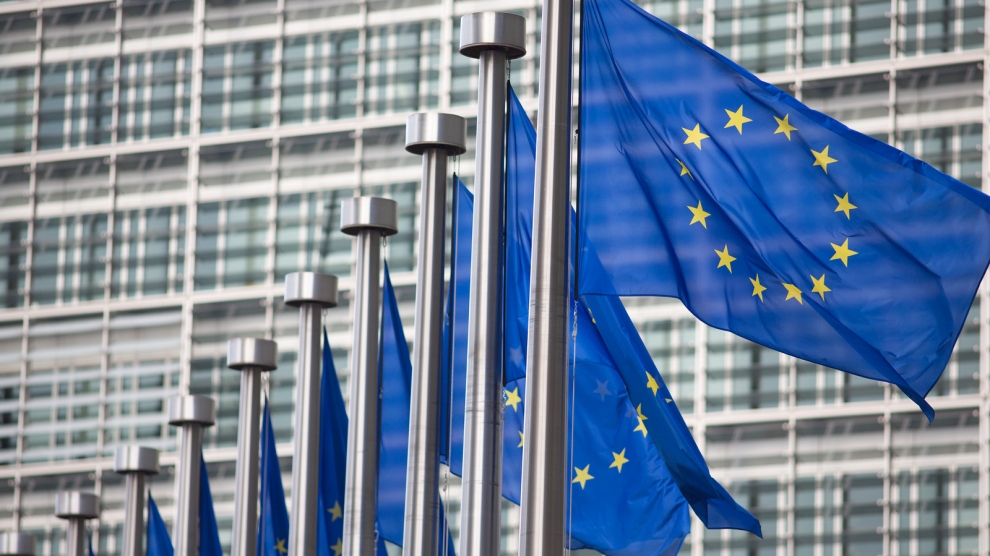
This week, the European Commission approved the disbursement of 36 million euros in grant money for the Republic of Moldova. The announcement was made by Deputy Director-General for Neighbourhood Policy and Enlargement Negotiations at the European Commission, Katarina Mathernova, who paid an official visit to the Republic of Moldova between September 13-15, together with Managing Director for Russia, Eastern Partnership, Central Asia, Regional cooperation and OSCE, at the European External Action Service, Michael Siebert.
The EU officials had meetings with President Maia Sandu, Minister of Foreign Affairs and European Integration, Nicu Popescu, Speaker of Parliament, Igor Grosu, Prime Minister of the country, Natalia Gavrilita, as well as key representatives of Government, international financial institutions and the civil society, according to a press release issued by the Delegation of the European Union to the Republic of Moldova.
Beside such topics as the EU-Moldova relations and prospects, the priorities of the reform agenda of the new Moldovan Government, preparations for the Eastern Partnership Summit at the end of the year and the Transnistrian conflict settlement, the officials also discussed the EU assistance in support of reforms and the Economic Recovery Plan for Moldova, which was announced in June with a total EU support of 600 million euros over the next 3 years.
“The first measures under the Economic Recovery Plan will shortly materialize, with the expected disbursement of 36 million euros in grant money under budget support programmes to support the authorities’ efforts to fight against the consequences of the pandemic. Moldova can count on EU’s assistance on its path to reforms and to recovery, bringing tangible results to citizens,” Katarina Mathernova stated.
The plan is based on assistance provided by the European Union through various bilateral and regional instruments, aiming to mobilize the funds in the form of grants, loans, guarantees and macro-financial assistance.
“The Economic Recovery Plan for the Republic of Moldova involves much more, not just this financial support provided immediately. It must help digital transformation, strengthen infrastructure, energy efficiency, education and support small and medium-sized enterprises,” the EU official also said.
As Prime Minister Natalia Gavrilita informed, “The Economic Recovery Plan and the 5 flagship initiatives for Moldova in the Eastern Partnership will directly contribute to the reform and consolidation of institutions, stimulate long-term socio-economic development, bring direct benefits to citizens, and unleash new economic opportunities through promoting the green agenda and digitization. Small and medium-sized enterprises (SMEs) have been hit hard by the crisis. Promoting and diversifying access to finance and reducing collateral requirements will be essential in supporting economic operators. We are grateful to the EU partners who will launch two programs to support 50 000 independent Moldovan SMEs to adapt to the new conditions.”
President of the Republic of Moldova, Maia Sandu, welcomed the decision of the European Union to disburse about 745 million lei in grant money, as the official page of the President’s Office announced. “EU support comes after a long period of freezing of European assistance, caused by former governments. We managed to relaunch the political dialogue with the European Union and resume financial assistance. The Republic of Moldova is gradually regaining the trust of its strategic partners. This European support is also a signal of encouragement for the new Government team in its commitment to clean up the institutions, fight corruption and launch development programs in the country,” said Maia Sandu.
Photo: unknown
Economy
Romania and Moldova signed a partnership memorandum pledging to cooperate in promoting their wines
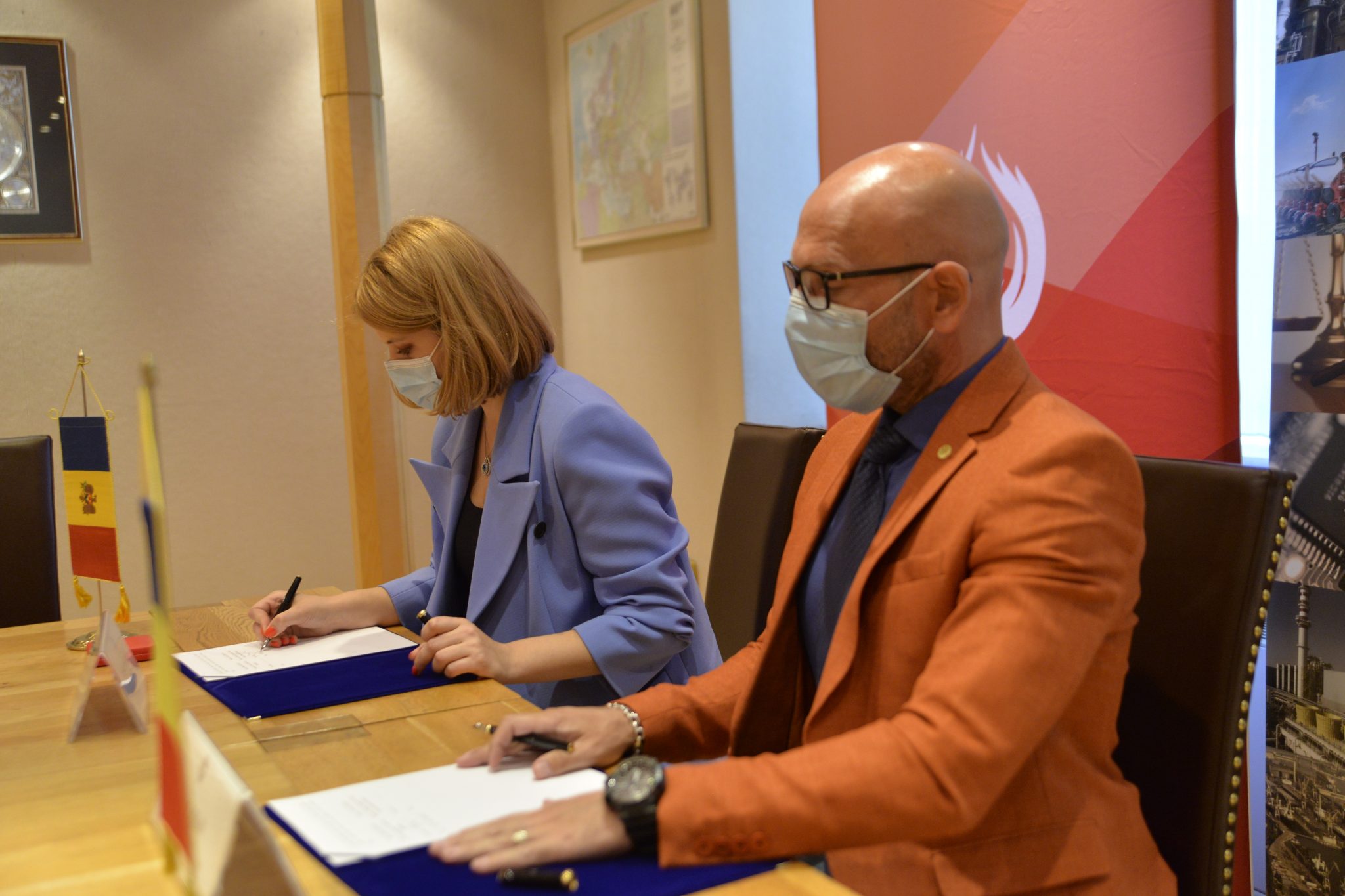
The Chamber of Commerce and Industry of Romania (CCIR) and the National Office for Vine and Wine (NOVW) of the Republic of Moldova signed, last week, a memorandum of cooperation on organizing joint promotional activities in the markets of common interest, as the CCIR announced.
China, Japan or the USA are just some of the markets targeted by the Romanian and Moldovan institutions. The memorandum also involves advertising activities for wines from common indigenous varieties, promoting the oeno-tourist region, developing a tourist route in the two states, exchange of experience, study visits, and mutual support in identifying new export opportunities. “We are very confident that this collaboration between our organizations will lead to sustainable economic growth and a higher degree of well-being among Moldovans and Romanians,” claimed Deputy Secretary-General of CCIR, Bogdan Visan.
On the other hand, Director of the NOVW, Cristina Frolov, declared that no open competition with Romania is aimed at the governmental level of the Republic of Moldova. “This request for collaboration is a consequence of the partnership principle. Romania imports 10-12% of the wine it consumes, and we want to take more from this import quota. Every year, the Romanian market grows by approximately 2.8%, as it happened in 2020, and we are interested in taking a maximum share of this percentage of imported wines without entering into direct competition with the Romanian producer,” the Moldovan official said. She also mentioned that Moldova aims at increasing the market share of wine production by at least 50% compared to 2020, and the number of producers present on the Romanian market – by at least 40%.
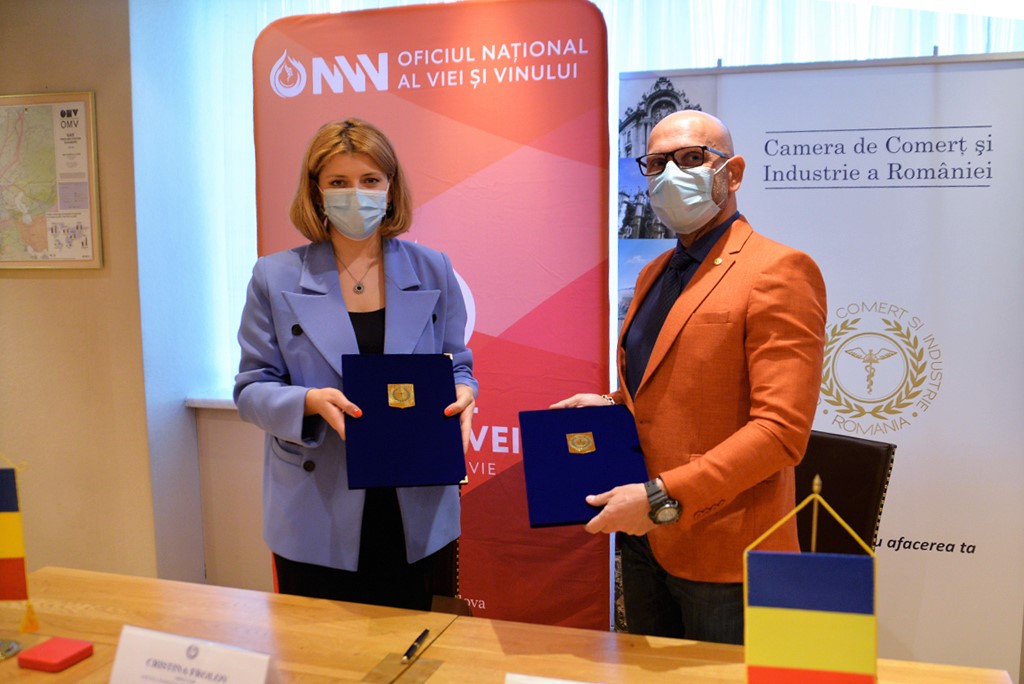
Source: ccir.ro
**
According to the data of the Romanian National Trade Register Office, the total value of Romania-Moldova trade was 1.7 billion euros at the end of last year and over 805 million euros at the end of May 2021. In July 2021, there were 6 522 companies from the Republic of Moldova in Romania, with a total capital value of 45.9 million euros.
The data of Moldova’s National Office of Vine and Wine showed that, in the first 7 months of 2021, the total quantity of bottled wine was about 27 million litres (registering an increase of 10% as compared to the same period last year), with a value of more than one billion lei, which is 32% more than the same period last year. Moldovan wines were awarded 956 medals at 32 international competitions in 2020.
Photo: ccir.ro
Economy
Moldova’s hope to be a top walnut exporter and its main difficulties
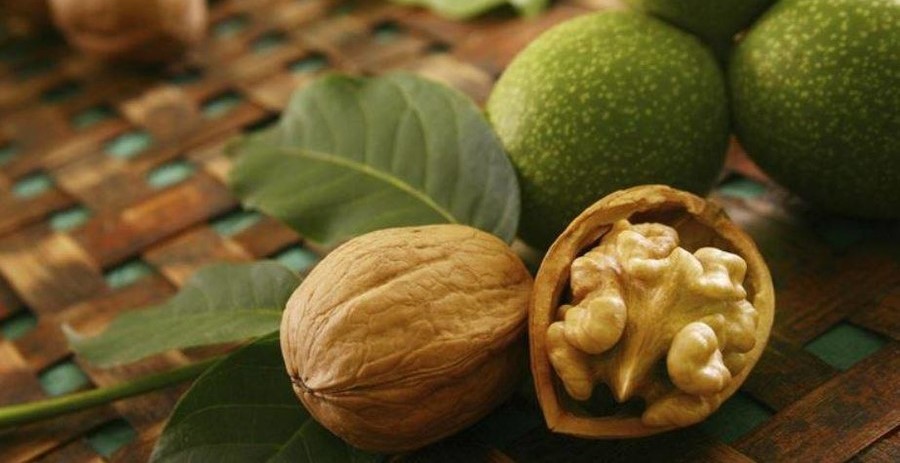
The Republic of Moldova has perfect weather conditions for growing walnut trees, that creating a great potential of walnut production and trade, especially on international markets, where the demand is way higher than the product’s supply. National and international experts believe that the country’s walnut production industry is on the verge of important transformations, which could lead to increased yields, quality and competitiveness worldwide.
According to authorities, Moldova exports 34-35 thousand tons of walnuts in shell, which is about 7% of the total export of fruit and 5% of the total export of horticultural products. The export value is assessed as being $120 million, that being 57-60% of the total fruit export value and about 50% of horticultural export value. Most of walnut crops are exported to the EU countries, such as France, Germany, the Netherlands, Romania and Austria. The country’s exports were among the world’s top 10 when it comes to the highest dollar value of the product during 2020.
Viorel Gherciu, Minister of Agriculture and Food Industry, pointed out that the production in the domestic walnut industry has increased by 55% in the last five years, which ranks Moldova among the main producers in the world.
“The biggest opportunity for this industry is that we are in the geographical proximity of the largest walnut import area in the world, which is the European Union, with almost 40% of total imports in the world. We are on the EU border, with privileged relations, with an Association Agreement. We already enjoy a good relationship in working with European importers, they trust our processors. A very close collaboration has been created and this is, in fact, the guarantee for those who invest in the area,” claimed the president of the Walnut Producers Association, Oleg Tirsina.
The data provided by the National Bureau of Statistics show that there are 34.7 thousand hectares of walnut plantations in the country. 20.90 hectares are represented by orchards. 75% of planted orchards are formed of old varieties trees. 30-35% of the exported production comes from orchards, the rest comes from individual farmers and plantations along the roads. This means that the quality of walnut production is not at its maximum potential. Developing commercial plantations through orchards modernization and extension of walnut varieties would provide double yield and better quality, experts say.
Governmental support in the form of subsidizing solutions, foreign investments and credit options are indispensable for the industry development. One of the financing options is the credit line of the European Investment Bank Project. Since 2016, 15 producers and processors of nuts, almonds and hazelnuts have benefited from these loans with the total amount of investments worth 8.7 million euros. A further extension of the project would provide another 60 million euros for the modernization of the horticultural sector in general and for harvesting organic walnuts in particular.
Photo: heymoldova.com


